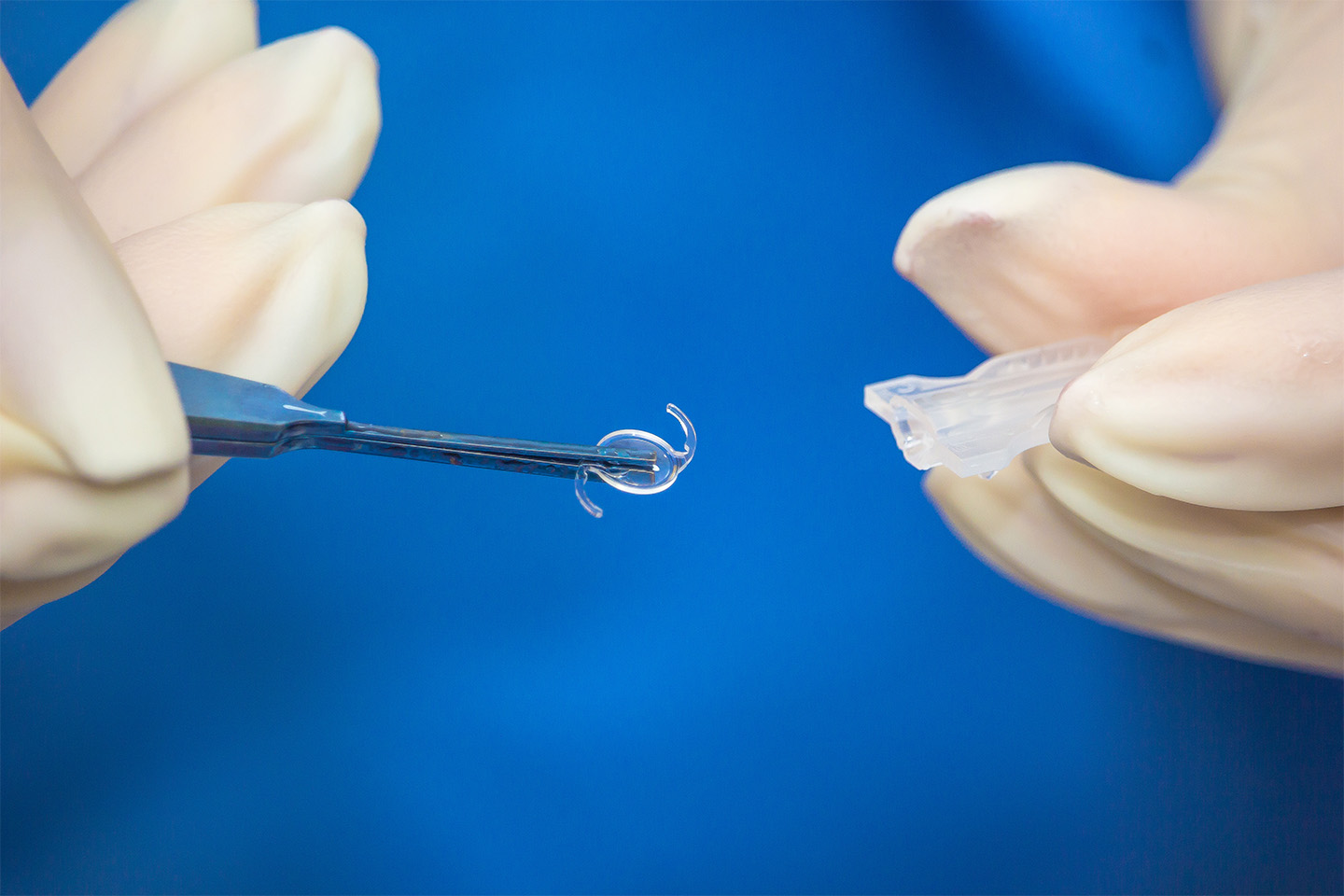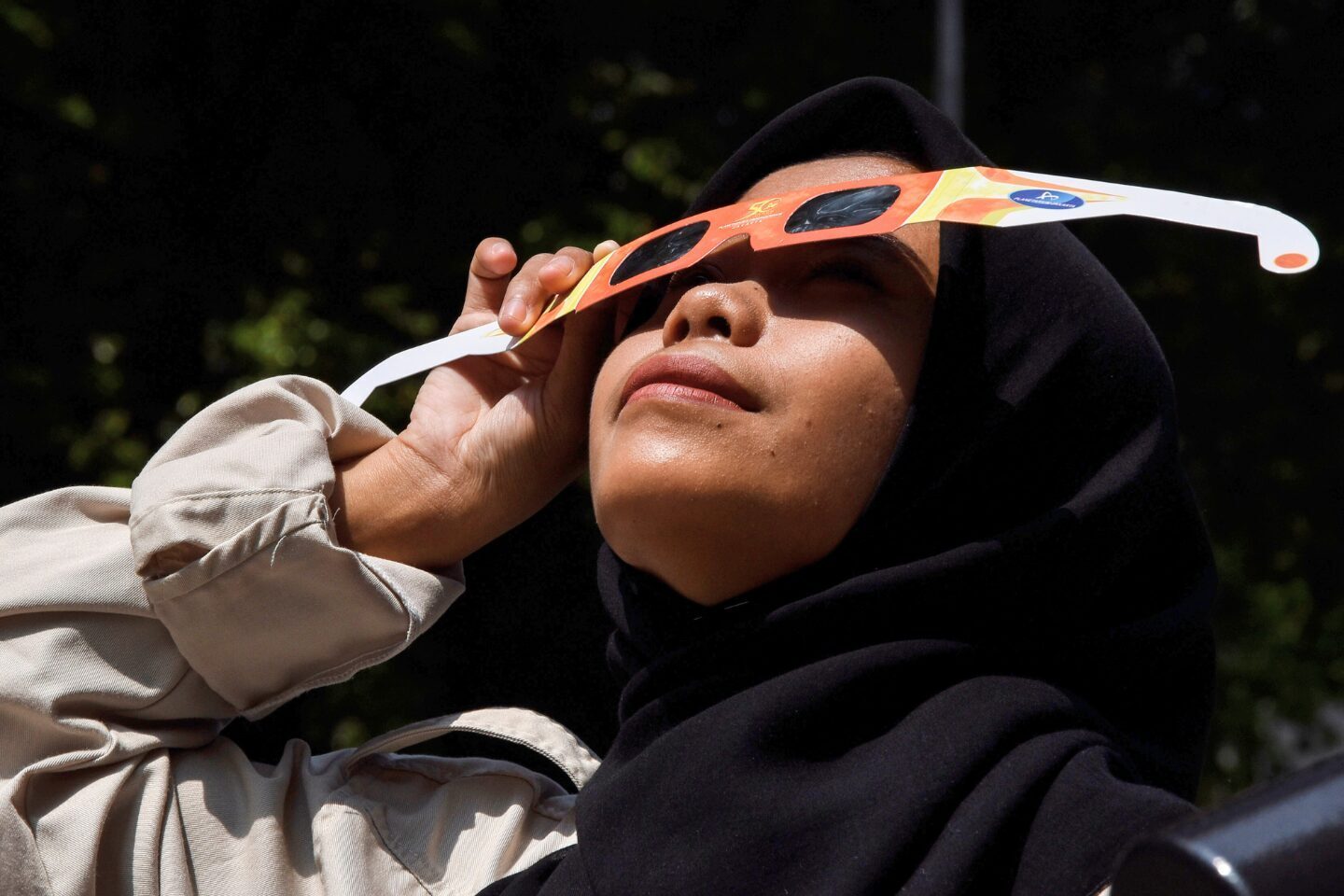5 Common Eye Problems in Texas

If you’re starting to experience visual changes, you want to feel confident there’s a solution. Luckily, advancements in diagnostic and treatment technology allow you to detect and address eye conditions earlier so that you can hold onto your vision longer. Continue reading for five common eye problems in Texas and the treatment options available to you at Kleiman Evangelista Eye Centers.
1. Dry Eyes
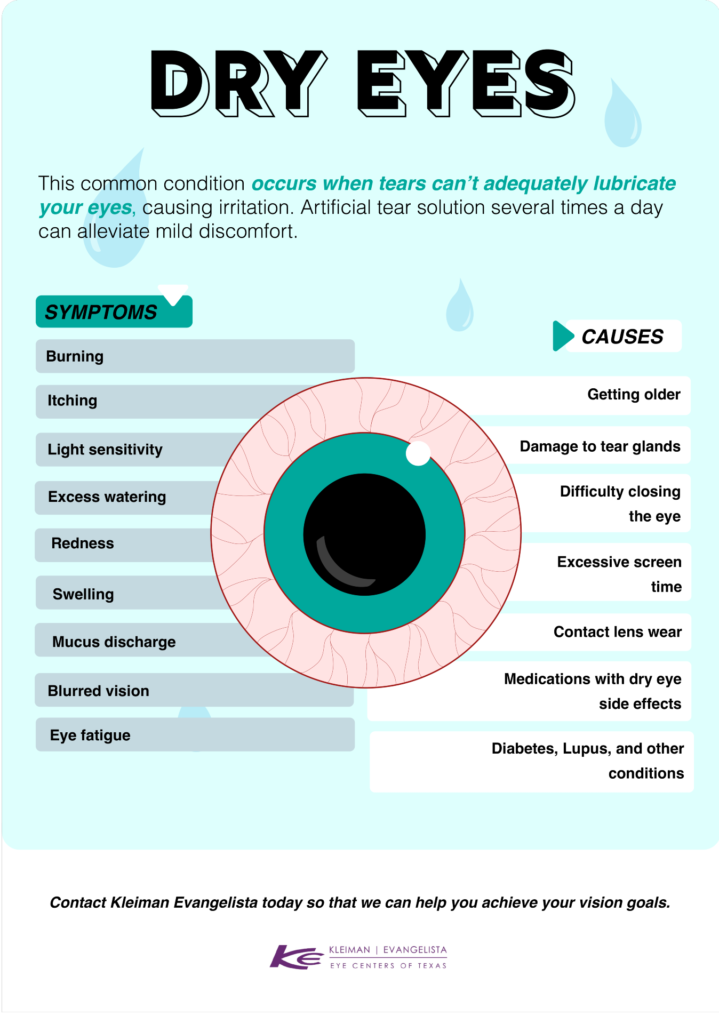
Symptoms
Depending on the severity of your dry eyes, you can experience a range of symptoms:
- Stinging
- Burning
- Itching
- Light sensitivity
- Excess watering
- Redness
- Swelling
- Mucus discharge
- Blurred vision
- Eye fatigue
Dry eye symptoms typically occur in both eyes at the same time though can affect one more than the other. They can begin with the feeling of an eyelash in the eye and continue to worsen and impact the vision. Excessive watering is another a common sign of overcompensation for lack of tears.
Causes
You may experience dry eyes for several reasons:
- Getting older
- Diabetes, Lupus, and other conditions
- Medications with dry eyes side effects
- Damage to tear glands
- Difficulty closing the eye
- Excessive screen time
- Contact lens wear
Genetic and lifestyle factors can drastically reduce natural tear production or wick away moisture causing dry eyes. Environmental elements, such as smoke, wind, heat, lack of humidity, etc., can also result in temporary dry eyes.
Treatment Options
Regardless of the cause of your dry eyes, there are multiple treatment options the eye care specialists in Texas may use to alleviate the issue or make up for the lack of tears. These methods include artificial tears, warm compresses, eyelid expression, punctal plugs, prescription eye drops, and amniotic membranes.
Summary
Dry eyes occur when the eyes produce too few or low-quality tears due to a health condition, certain medications, aging, environmental factors, or problems with the tear glands. This condition can be treated using therapy that increases tear production or products that lubricate the eyes.
2. Refractive Errors
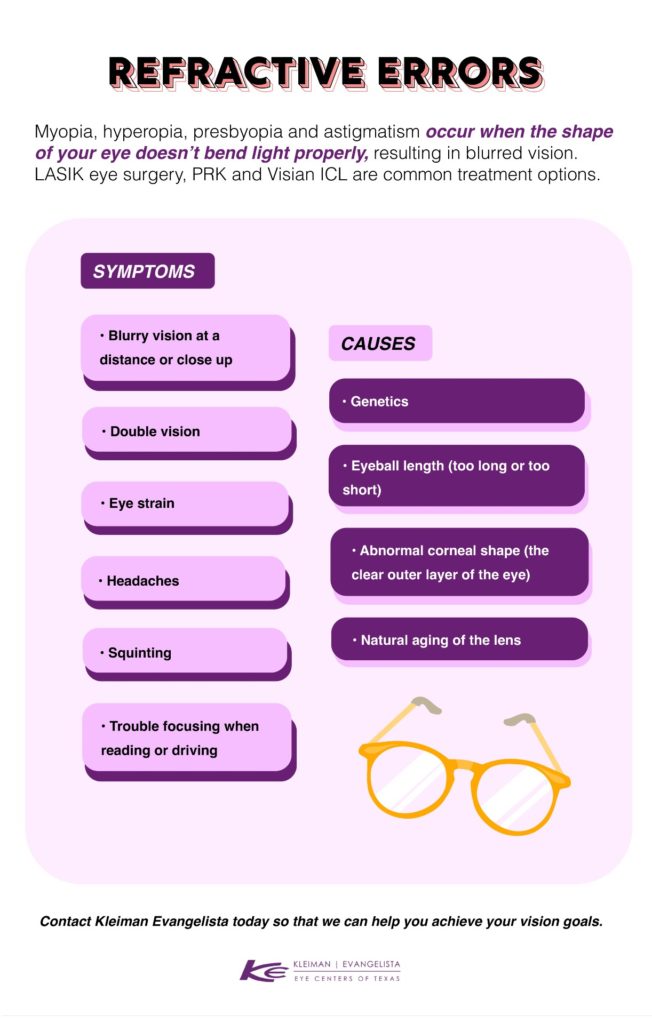
Symptoms
Depending on the type of refractive error you have, you may experience any number of symptoms:
- Blurry vision at a distance or close up
- Double vision
- Eye strain
- Headaches
- Squinting
- “Halos” or glare around lights
- Trouble focusing when reading or driving
Blurry vision is the most common sign of a refractive error. The eyes’ inability to focus leads to related symptoms, such as strain, headache, and fatigue.
Causes
Refractive errors may occur for any number of reasons, including:
- Genetics
- Eyeball length (too long or too short)
- Abnormal corneal shape (the clear outer layer of the eye)
- Natural aging of the lens
It is the shape of the eye that causes refractive errors. Myopia (nearsightedness) occurs when the eye is too long or the cornea is too steep, while hyperopia (farsightedness) occurs when the eye is too short or the cornea is too flat. Astigmatism stems from an abnormal eye shape and can occur simultaneously with nearsightedness and farsightedness.
Treatment Options
Contacts and glasses are a standard solution for refractive errors. However, the most popular, long-term solution for refractive errors is LASIK eye surgery in Dallas. The eye care specialists in Texas use the most advanced technology for precise results that can restore 20/20 vision in most patients. This quick in-office procedure lasts 15 minutes with an immediate recovery time of a few days, while full healing takes about 3 to 6 months.
Summary
Refractive errors, such as myopia (nearsightedness), hyperopia (farsightedness), presbyopia (age-related farsightedness), and astigmatism, are the most common eye problem in Texas. Hundreds of thousands of people receive LASIK eye surgery in Dallas each year to correct refractive errors.
3. Cataracts
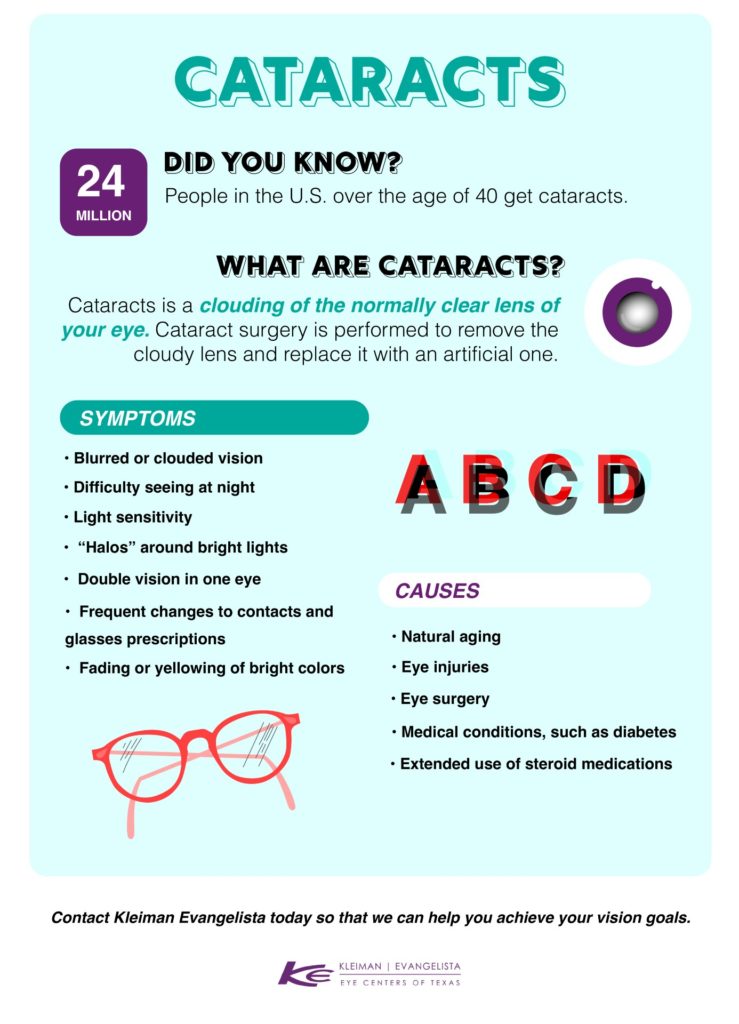
Symptoms
A list of symptoms characterizes cataracts:
- Blurred or clouded vision
- Difficulty seeing at night
- Light sensitivity
- “Halos” around bright lights
- Double vision in one eye
- Frequent changes to contacts and glasses prescriptions
- Fading or yellowing of bright colors
Causes
Common causes of cataracts include:
- Natural aging
- Eye injuries
- Eye surgery
- Medical conditions, such as diabetes
- Extended use of steroid medications
Treatment Options
In some cases, a new prescription can clear up your vision. However, the only effective and permanent solution for this condition is cataract surgery in Dallas. Depending on your vision goals, you can choose from various lens options, including monofocal, toric, and multifocal. At Kleiman Evangelista, we also carry the PanOptix Trifocal Lens, which offers the best vision at three ranges: near, intermediate, and far.
Summary
Cataracts are a common condition, especially in older adults, that occurs due to the clouding of the eye’s natural lens. Cataract surgery in Dallas can completely restore vision with the use of one of our premium lens options.
4. Glaucoma
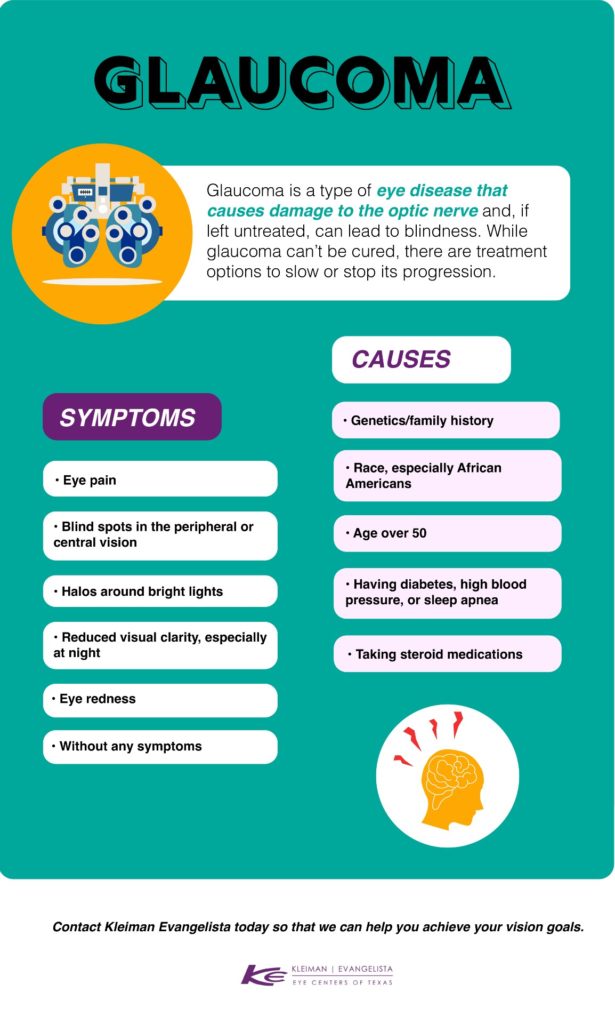
Symptoms
Glaucoma can present with various symptoms:
- Eye pain
- Blind spots in the peripheral or central vision
- Halos around bright lights
- Reduced visual clarity, especially at night
- Eye redness
- Without symptoms at all
There are rarely any signs of glaucoma in its early stages, so early detection and regular exams beginning at 35 are important. Left untreated, glaucoma can result in complete blindness.
Causes
Certain characteristics can put you at a greater risk for developing glaucoma:
- Genetics/Family history
- Race, especially African Americans
- Age over 50
- Having diabetes, high blood pressure, or sleep apnea
- Taking steroid medications
Glaucoma results from damage to the optic nerve. This deterioration usually comes from increased intraocular pressure, which can be influenced by certain risk factors, such as genetics, age, certain health conditions, and more.
Treatment Options
Glaucoma treatment in Dallas begins with eye drop therapy that aims to preserve your vision and prevent further loss. From there, the eye care specialists in Texas will assess the form of glaucoma, the severity, and other underlying conditions to determine the rest of your treatment route. Treatment options range from prescription eye drops to laser surgery that regulates eye pressure and fluid drainage.
Summary
Glaucoma is a group of diseases that damage the optic nerve most often due to elevated eye pressure and improper fluid drainage. Early detection and treatment with eye therapy and laser surgery can slow the progression of this condition.
5. Age-Related Macular Degeneration

Symptoms
Depending on the form of age-related macular degeneration you have, you may experience a range of symptoms:
- Reduced central vision
- Blurred vision
- Difficulty seeing in low light
- Distorted shapes, lines, and faces
- Blind spots in centerline of vision
- Need for extra light
The early stages of age-related macular degeneration do not cause noticeable symptoms. However, once symptoms begin, they typically worsen quickly, especially in cases of wet macular degeneration. Commonly, the centerline of vision is affected the most with this condition.
Causes
The exact cause of age-related macular degeneration is unknown, but there are risk factors that increase your chance of developing the condition:
- Family history
- Being over 50
- Prolonged sun exposure
- Smoking
- Being overweight
- Pre-existing conditions, such as diabetes, high blood pressure, high cholesterol, etc.
- Race, especially for Caucasians
- Gender (women are more likely)
Treatment Options
When caught early, age-related macular degeneration is controlled using dietary changes, nutritional supplements, vision aids, and regular eye exams. If the condition progresses further, the eye care specialists in Texas may use medical intervention, including injections that address leaking and growing blood vessels.
Summary
Age-related macular degeneration presents in two ways: wet and dry, which occurs due to a buildup of yellow deposits or abnormal blood vessels, respectively. Treatment options are minimally invasive, including lifestyle changes and injections.
At Kleiman Evangelista Eye Centers, we are equipped to detect, diagnose, and treat the most common eye problems in Texas. Our trained staff of surgeons offers individualized treatment using the most advanced technology that allows you to achieve your vision goals.




